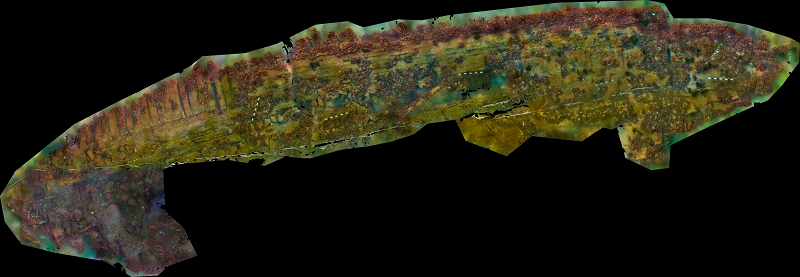A Window into History
Title: Exploring the Digitally Preserved HMS Buffalo Shipwreck: A Window into History
Introduction: The HMS Buffalo, a British naval ship, met its tragic fate in July 1840 when it sought refuge in Mercury Bay, Whitianga, New Zealand to escape an approaching storm. Now, over 180 years later, the shipwreck has been digitally preserved and displayed for the first time, allowing enthusiasts and researchers worldwide to explore this historical artifact in unprecedented detail. Through the collaborative efforts of the HMS Buffalo Re-examination Project and the Mercury Bay Museum, a 3D digital model has been created, providing a fascinating glimpse into the past.
Unveiling the Digital Model: Maritime archaeologists and project co-directors, Dr. Kurt Bennett and Matthew Gainsford, along with a team of 12 volunteer divers, dedicated a weekend to document the wreck in extraordinary detail [1]. Employing photogrammetry, they captured over 14,000 images with a 60% overlap, despite challenging diving conditions and limited visibility. These images were then processed by Dr. Arie Spyksma from New Zealand Geographic, with support from the Live Ocean Foundation, resulting in a remarkable 3D model of the ship [1].
Uncovering Hidden Details: The digital model showcases the preserved hull and unveils approximately 70% of the ship’s structure. It offers a comprehensive understanding of the vessel’s features, from bow to stern, enabling researchers to gain valuable insights into the construction techniques of early-19th century ships [1]. Moreover, the model highlights the diverse marine life that has colonized the exposed surfaces of the wreck, creating a unique ecosystem within the confines of the ship’s remains [1].
Preserving History and Monitoring Change: The digital model of the HMS Buffalo not only serves as a record of the site’s condition but also helps monitor environmental changes over time. This valuable resource allows regional councils, conservation organizations, and heritage institutions to manage and safeguard this protected archaeological site more effectively [1]. With climate change posing potential threats, regularly monitoring the site becomes crucial to understand the long-term impacts on the shipwreck and its surroundings [1].

Educational and Cultural Significance: The digital model holds immense educational potential. The Mercury Bay Museum plans to incorporate it into a new Buffalo exhibition, enabling visitors to engage with the ship’s history. Furthermore, virtual reality experiences will be developed, providing immersive encounters with the shipwreck for school groups and local history enthusiasts. This initiative not only enhances the local history curriculum but also promotes global engagement with this shared heritage [1].
Connecting Nations and Communities: The HMS Buffalo has historical ties to various countries, including India, Canada, and Australia [[1](https://mercurybaymuseum.co.nz/hms-buffalo-digitally-preserved-and-displayed-for-the-first-time/
We extend our heartfelt thanks to Rebecca Cox, the museum manager and co-director of the HMS Buffalo Project, for her invaluable contributions in preserving and sharing the rich maritime heritage of Mercury Bay” (source: Mercury Bay Museum).
Thank you, Rebecca Cox, for your dedication and efforts in bringing the history of HMS Buffalo to life for people around the globe. Your commitment to preserving this important archaeological site and making it accessible to all is truly commendable.






